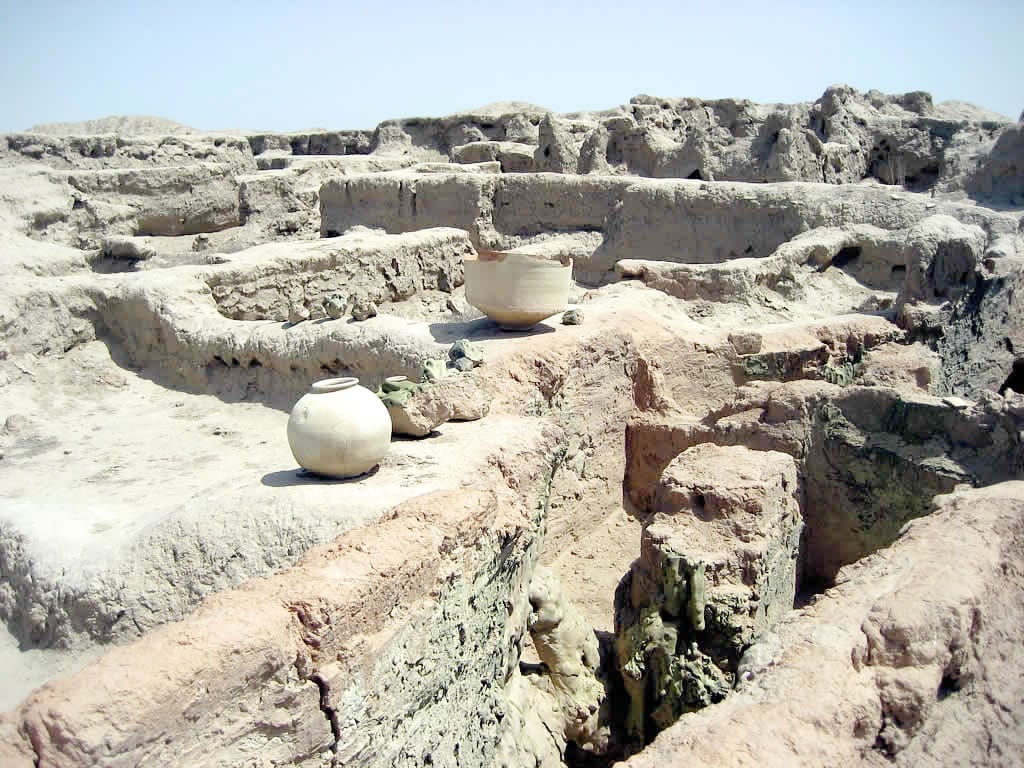The most vivid and impressive stages of the history of Turkmenistan reflect the monuments of the Mary oasis. Its earliest core is Gonur-Depe. Today it is not just the largest settlement of the Bronze Age in Central Asia (the end of the third and middle of the second millennium BC). It is also a bright symbol of the deepest roots of the Turkmen people, whose distant ancestors created such a high culture that scholars around the world agreed: the country of Margush, whose center was Gonur-depe, along with Egypt, Mesopotamia, India and China is one of the five primary centers of the world civilizations where trade and cultural lines of international relations crossed. The achievements of the Margush people in architecture and visual arts, the level of their handicraft production, the political system created by them and religious doctrine put them among the advanced peoples of the Ancient East, who opened the way for further progress of mankind.
Gonur-Depe is a whole archaeological park in the desert zone and the largest of more than three hundred settlements in the ancient delta of the Murghab River. Archaeologists have found that it originated in the years 2300-2250 BC. and lasted about 600-800 years. Only the central part of the monumental buildings of the Gonur complex was occupied by the time when people left it, about 25 hectares. Another 10 hectares of urban necropolis extends. The funerary objects and jewelry of the people buried here amaze with their magnificence. These are highly artistic products made of stone, metal, ivory and, of course, clay, which served as dough for skilled potters and sculptors who created the most delicate ceramic vessels of exquisite forms and figurines of deities of the pagan pantheon.
All of these countless objects that accompanied the entire life of the inhabitants of Gonur are today the exhibits of several museums of Turkmenistan, and their houses, the royal palace and the sanctuaries around it have become objects of the Ancient Merv State Historical and Cultural Reserve, whose monuments are included in the UNESCO World Heritage List.
Since then, in 1974, the well-known archaeologist Viktor Sarianidi, together with his Turkmen colleagues, found Gonur and began his excavations here, which are still ongoing, thousands of people managed to visit the ruins of a previously completely unknown ancient eastern kingdom. This pilgrimage is growing from year to year, because everyone who cares about history wants to see with their own eyes a truly fantastic city that was recently lost in the Karakum Desert, and now, after four thousand years, it has revealed to the world traces of the greatness of its unique culture.
When water was scarce for life, Gonur was abandoned and people began to develop land tens of kilometers south along the Murghab and its delta ducts. A new center has grown on the fertile soil of this oasis where the Yaz-depe and Gobekly-depe hills are now located, and when it became scarce in these places, another nucleus began to develop, even further along the river. It was there that Merv, which in the Middle Ages, like Baghdad, Cairo or Damascus, became one of the most important capitals of the Islamic world. It flourished in the 11th-12th centuries, during the reign of the Great Turkmen-Seljuks, whose empire stretched from the lower reaches of the Amudarya to the Mediterranean. In those days, Merv, known as Maru-Shahu-jan (Mary - the soul of the kings), was one of the largest cities in the East. Its uniqueness lies in the fact that it is not one city, but a chain of nearby fortifications belonging to different eras. If throughout Asia it was customary to build new settlements on the site of old ones, Merv moved from east to west for two and a half thousand years following the bed of wayward Murghab, which over the centuries drifted from the present city of Bayramali to modern Mary.
The ruins of the sites of Merv occupy thousands of hectares! Erk-Kala, Gyaur-Kala, Sultan-Kala, Abdullakhan-Kala, Bayramalikhan-Kala - behind each of these names - the centuries-old history of the ups and downs of kingdoms and dynasties, the history of wars and the continuous chronicle of creation, the revival of the city after natural disasters or social upheavals. And today it is a unique archaeological park where scientists from different countries of the world come and together with their Turkmen colleagues year after year conduct systematic excavations on Mary land, continuing the scientific traditions of their predecessors who have studied Merv since the end of the 19th century.

